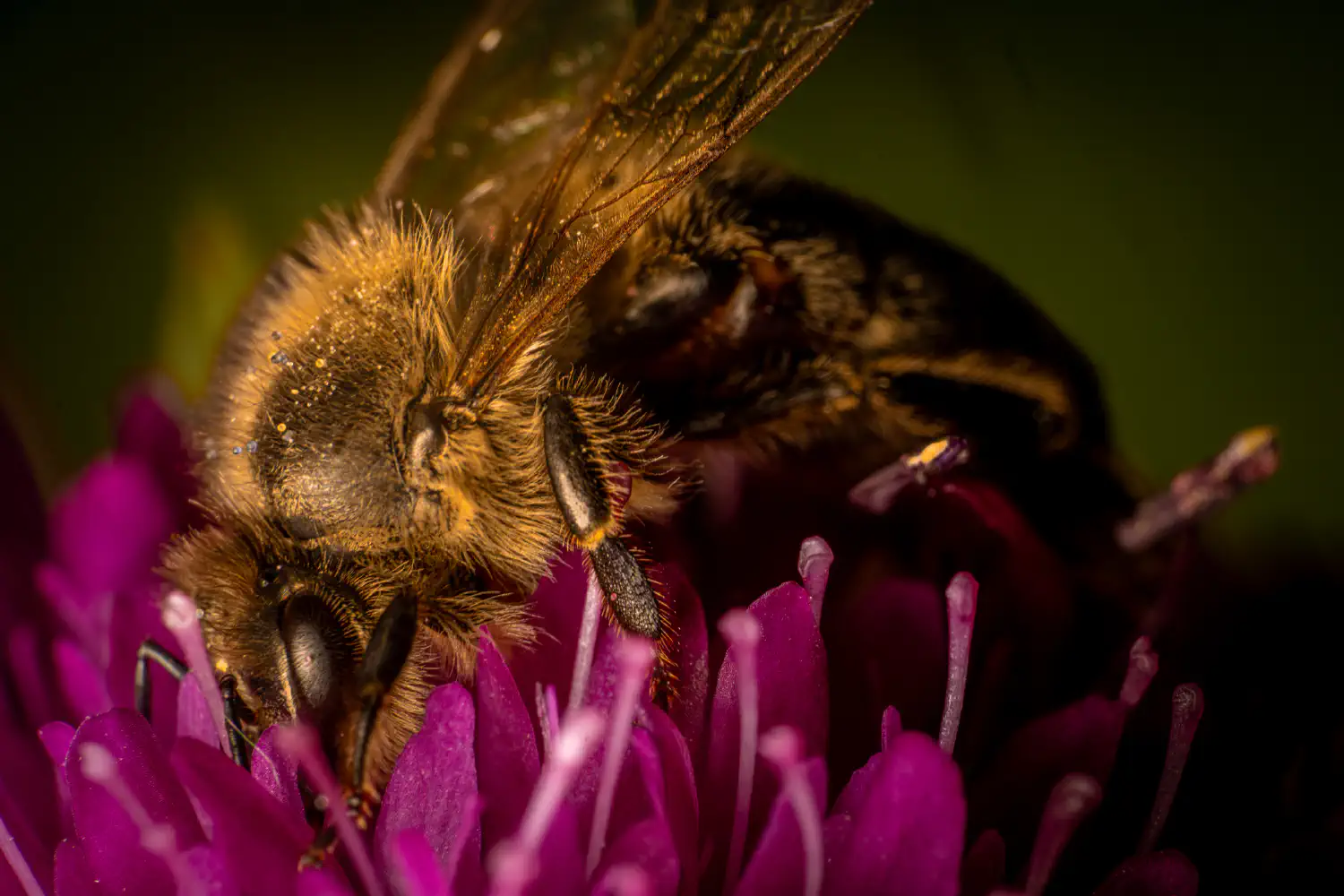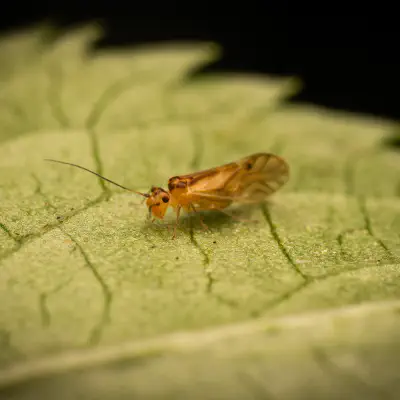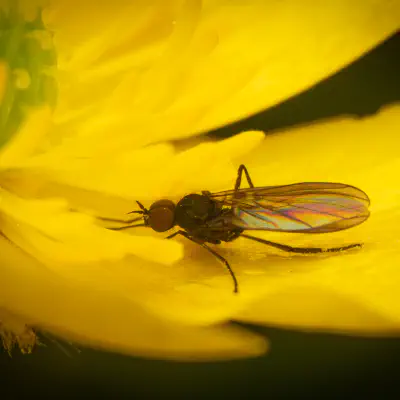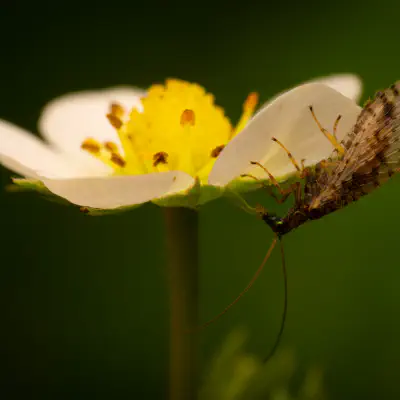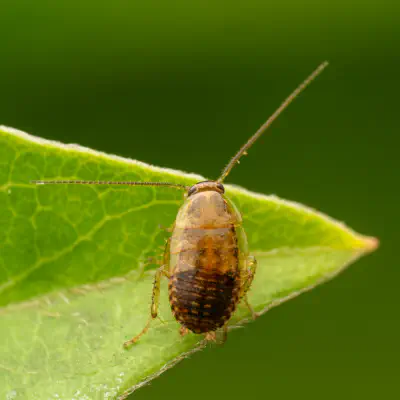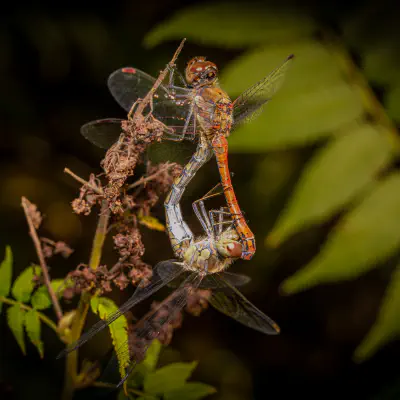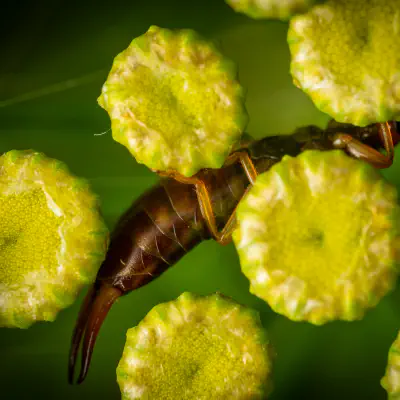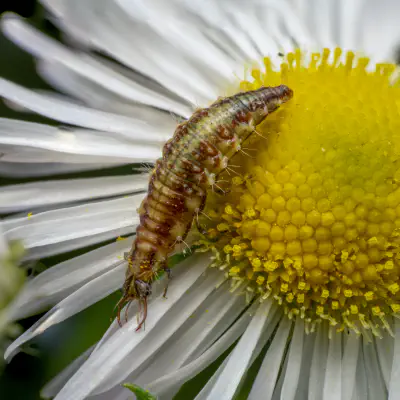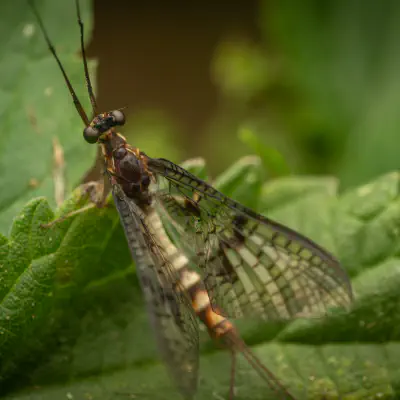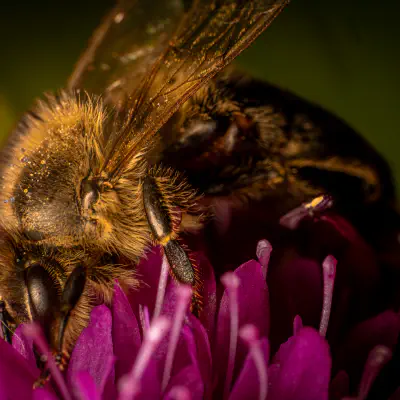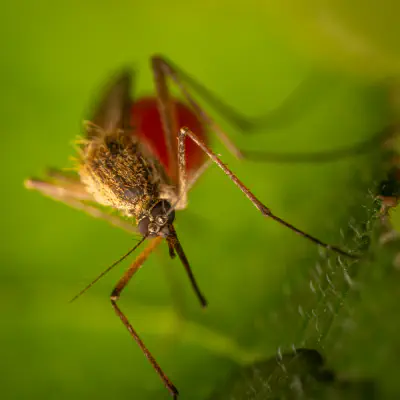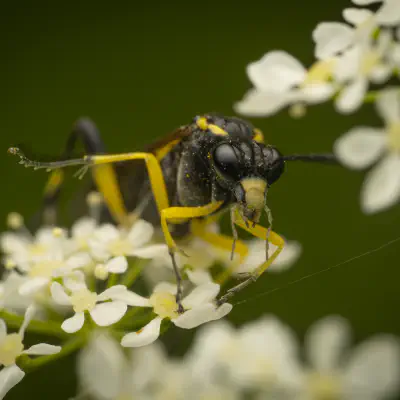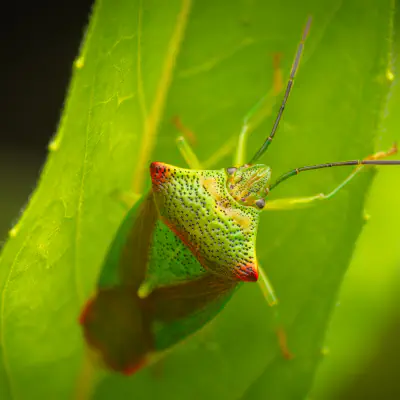Insects Lat. “Insecta“
Insects or Insecta (from Latin insectum, a calque of Greek ἔντομον , “cut into sections”) are by far the largest group of hexapod invertebrates within the arthropod phylum. Definitions and circumscriptions vary; in one approach insects comprise a class within the Phylum Arthropoda. As the term is used here, it is synonymous with Ectognatha.
Hierarchy
Etymology
The word insect comes from the Latin word insectum from in + sĕco, “cut up”, as insects appear to be cut into three parts. The Latin word was introduced by Pliny the Elder who calqued the Ancient Greek word ἔντομον éntomon “insect” (as in entomology) from ἔντομος éntomos “cut in pieces”; this was Aristotle’s term for this class of life in his biology, also in reference to their notched bodies. The English word insect first appears in 1601 in Philemon Holland’s translation of Pliny.
Communication
Insects that produce sound can generally hear it. Most insects can hear only a narrow range of frequencies related to the frequency of the sounds they can produce. Mosquitoes can hear up to 2 kilohertz. Certain predatory and parasitic insects can detect the characteristic sounds made by their prey or hosts, respectively. Likewise, some nocturnal moths can perceive the ultrasonic emissions of bats, which helps them avoid predation.
Social behavior
Social insects, such as termites, ants and many bees and wasps, are eusocial. They live together in such large well-organized colonies of genetically similar individuals that they are sometimes considered superorganisms. In particular, reproduction is largely limited to a queen caste; other females are workers, prevented from reproducing by worker policing. Honey bees have evolved a system of abstract symbolic communication where a behavior is used to represent and convey specific information about the environment. In this communication system, called dance language, the angle at which a bee dances represents a direction relative to the sun, and the length of the dance represents the distance to be flown. Bumblebees too have some social communication behaviors. Bombus terrestris, for example, more rapidly learns about visiting unfamiliar, yet rewarding flowers, when they can see a conspecific foraging on the same species. Only insects that live in nests or colonies possess fine-scale spatial orientation. Some can navigate unerringly to a single hole a few millimeters in diameter among thousands of similar holes, after a trip of several kilometers. In philopatry, insects that hibernate are able to recall a specific location up to a year after last viewing the area of interest. A few insects seasonally migrate large distances between different geographic regions, as in the continent-wide monarch butterfly migration.
Ecology
Insects play many critical roles in ecosystems, including soil turning and aeration, dung burial, pest control, pollination and wildlife nutrition. For instance, termites modify the environment around their nests, encouraging grass growth; many beetles are scavengers; dung beetles recycle biological materials into forms useful to other organisms. Insects are responsible for much of the process by which topsoil is created.
See also
Entomology Ethnoentomology Flying and gliding animals Insect-borne diseases
Sources
Gullan, P. J.; Cranston, P. S. (2005). The Insects: An Outline of Entomology (3rd ed.). Oxford: Blackwell Publishing. ISBN 978-1-4051-1113-3. Gullan, P. J.; Cranston, P. S. (2014). The Insects: An Outline of Entomology (5th ed.). Oxford: Wiley Blackwell. ISBN 978-1-118-84616-2. Nation, James L. (2001). Insect Physiology and Biochemistry (1st ed.). CRC Press. ISBN 978-0-8493-1181-9. Resh, Vincent H.; Carde, Ring T. (2009). Encyclopedia of Insects (2 ed.). Academic Press. ISBN 978-0-12-374144-8. Schowalter, Timothy Duane (2006). Insect Ecology: An Ecosystem Epproach (2nd (illustrated) ed.). Academic Press. ISBN 978-0-12-088772-9. Archived from the original on 3 June 2016. Retrieved 27 October 2015.
External links
Insect species and observations on iNaturalist Overview of Orders of Insects “Insect”. The Encyclopedia of Life. A Safrinet Manual for Entomology and Arachnology SPC Tree of Life Project – Insecta, Insecta Movies Fossil Insect Database: Holotypes at the International Palaeoentological Society UF Book of Insect Records InsectImages.org 24,000 high resolution insect photographs
Ancestry Graph
Further Information
Copyright

This article uses material from the Wikipedia article Insecta the free encyclopedia Wikipedia which is released under Creative Commons Attribution-ShareAlike 4.0 International License). On Wikipedia a list of authors is available.

Little beings in print
Order our calendars and books today!
Compiled with love. Printed sustainably. Experience our little beings even more vividly in print. All our publications are available for a small donation.

